Table of Contents
Permanent crown on post and core: the perfect synergy between intraoral scan and 3D printing
By Domenico Mastandrea – CreaMed
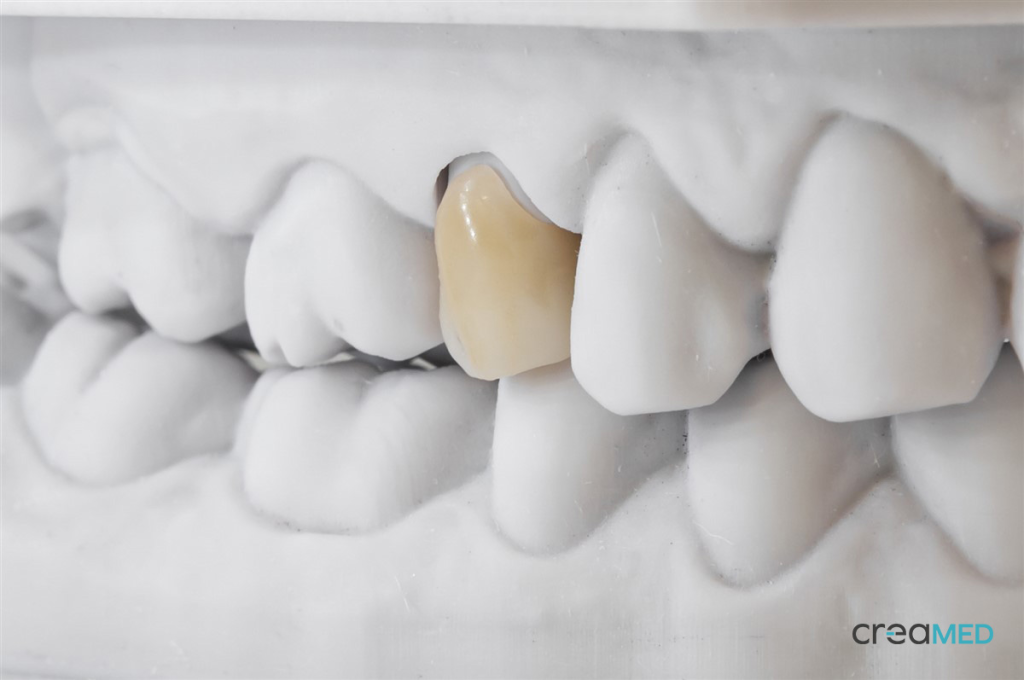
In recent decades, the world of Dentistry and Dental Technology has been undergoing a change in the dental protocol. It has been increasingly shifting from analog to digital.
Dental prosthesis– once realized by the artisan– are now developed virtually, by clicking a mouse and through scanning. On top of the analog-to-digital conversion, the dental field is at the dawn of a new productive (r)evolution: the 3D printing one. It is rapidly emerging, offering a variety of solutions and new materials. 3D printing offers the possibility to create dental prosthesis more quickly and efficiently, reducing waste.
For instance, most of the dental laboratories would surely realize a permanent crown on a natural crown stump from zircon, by removing the material from disks. On the contrary, in the case below we show the creation of a permanent crown on metal post and core through the additive manufacturing and with an almost exclusively digital workflow.
3D scanning with Aoralscan
We identified the dental record with the Aoralscan from SHINING 3D. The software made the procedure easier thanks to its “metal tooth scan” tool. This modality modifies the acquisition settings to allow for easy scanning of metal elements without powders or mattifying spray.
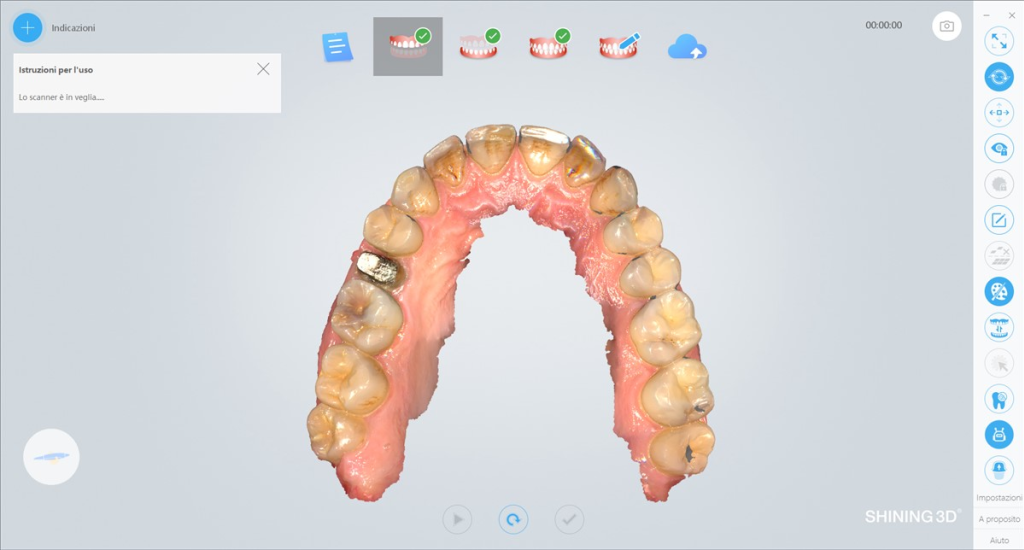
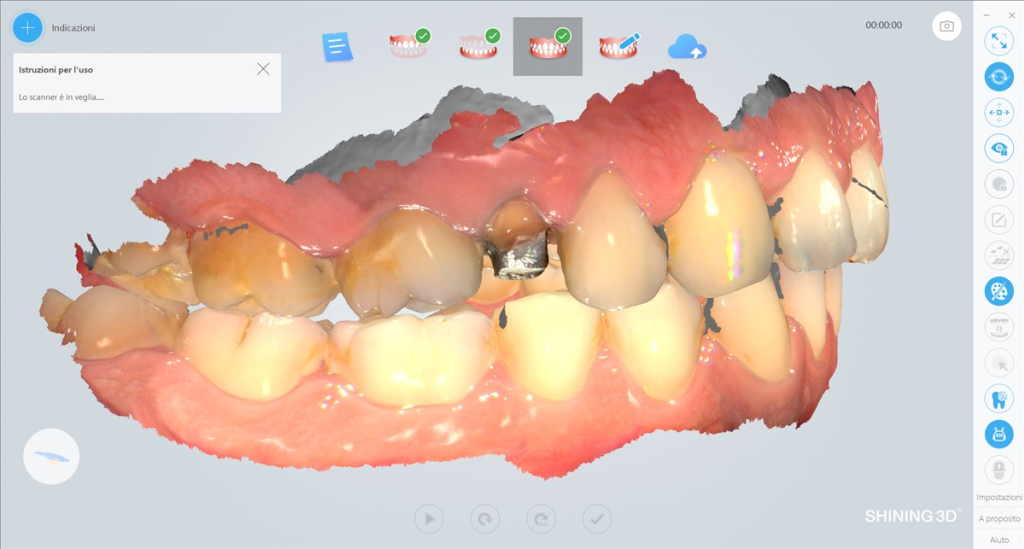
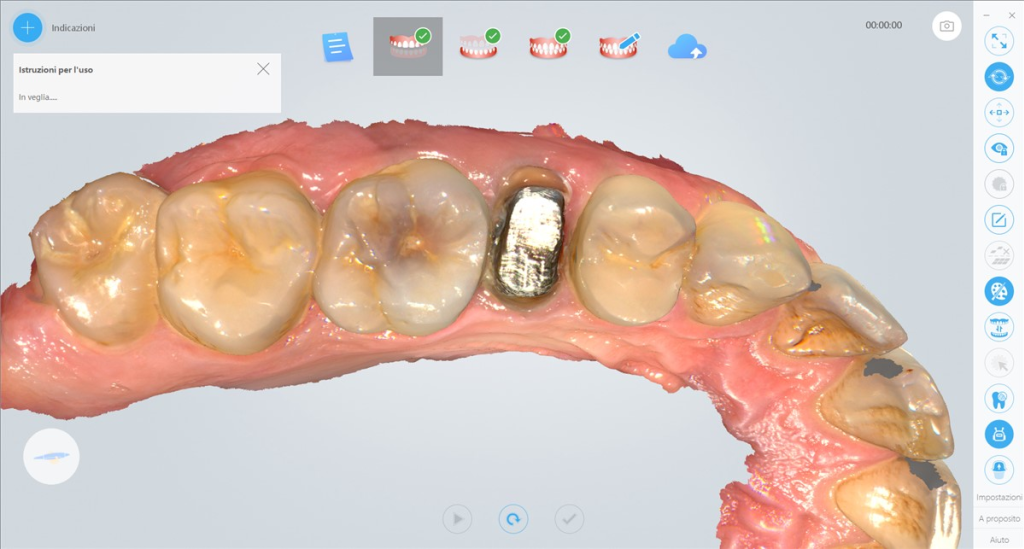
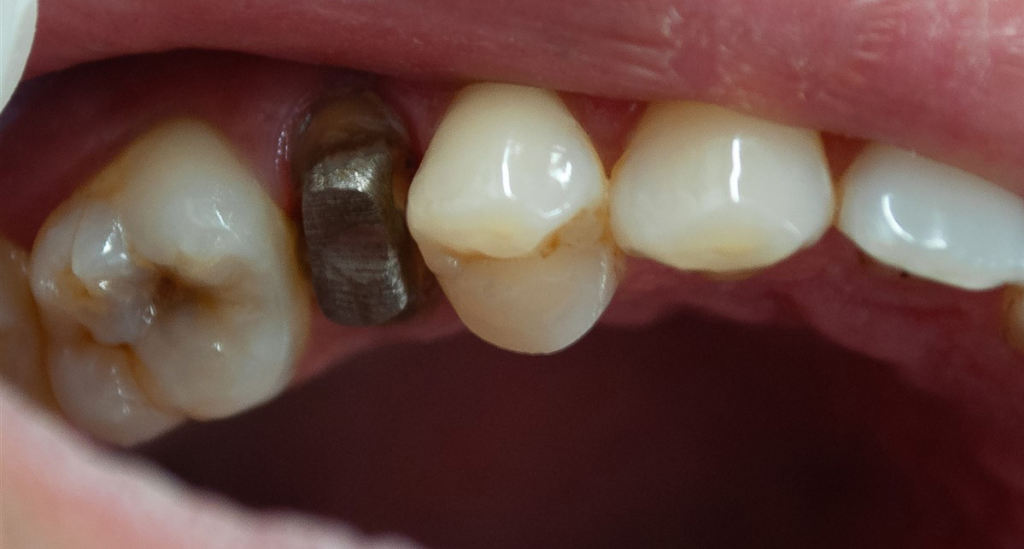
The intra-oral impression, besides its ease of execution, provides the possibility to reduce the time spent on the dental chair with the consequent maximum comfort for the patient. The intra-oral record also – and above all – offers that immediacy of communication with the laboratory which can now bypass or postpone the steps involved in realizing the model, directly approaching the modelling and the fine-tuning of the dental prosthesis.

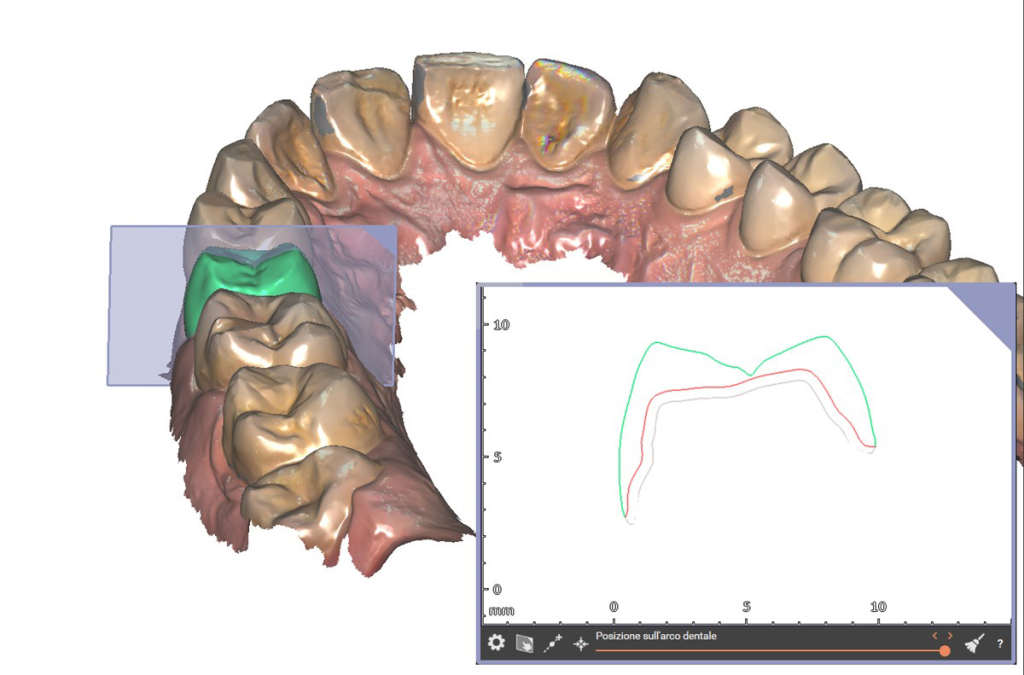
Thus, it becomes easy for the laboratory to optimize production and delivery time, improving the whole team efficiency. In this case study, the team modeled the crown through Exocad.
3D printed crown with BEGO resin and Accufab
After modeling, the crown was 3D printed on a SHINING 3D Accufab-D1. The team used hybrid micro-filled resin BEGO VarseoSmile Crown Plus A1.

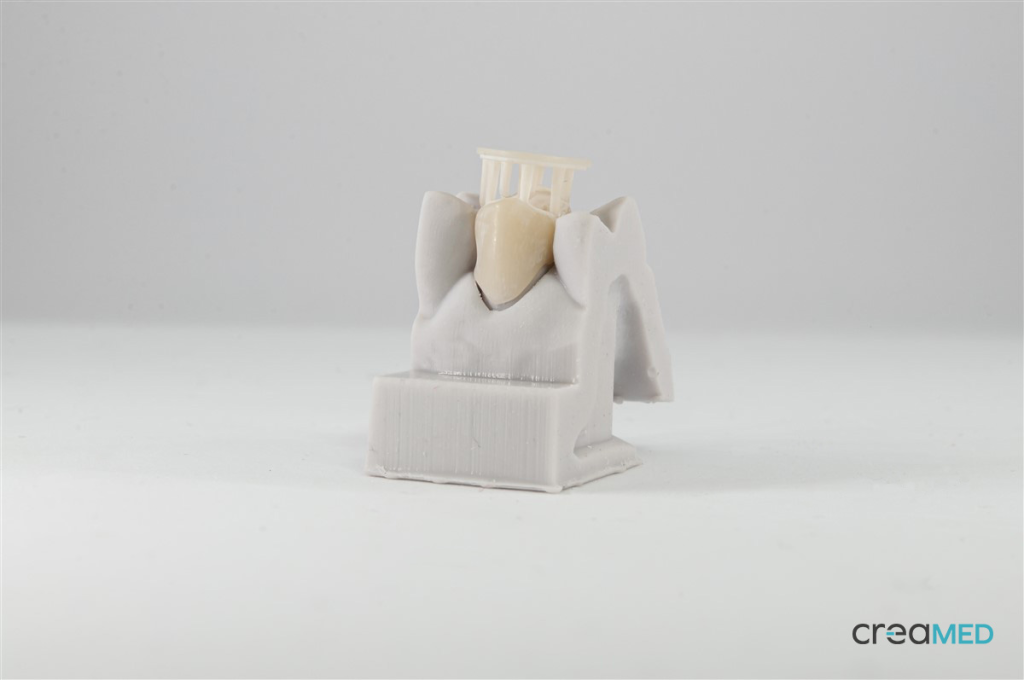
This BEGO resin’s mechanical properties make it possible to obtain very durable tooth crowns. They enhance the absorption of masticatory loads and provide a long-lasting degree of wear. Also, they are not abrasive for the opponent teeth.
Regarding the aesthetics, BEGO VarseoSmile Crown Plus’s opacity contributes to conceal – even with relatively low thicknesses – the reduction in the value caused by the metal post and core crown or, possibly, colour shifts arising from dyschromic or necrotic stumps.
Thanks to this protocol, the workflow for the realization is reduced to a few hours. This time covers print, finish and marking out the crown.
The Accufab-D1’s accuracy has also made it possible to obtain high precision concerning the finish line. We verified this through the 3D printed models with the KeyModel Ultra Light Grey resin.
This material, indeed, is ideal even in terms of aesthetics. It features a neutral colour which does not affect the prosthetic tooth shades in the process of characterization of the printed model.

The versatility of the definitive material allows both the exterior painting and the layering of enamel parts. This offers the crown greater three-dimensionality and naturalness. In the present case, analysing the pic colours, we opted for the superficial coloration as finishing protocol. Moreover, we worked a lot on care of the shape and texture to find the best integration with the adjacent teeth.
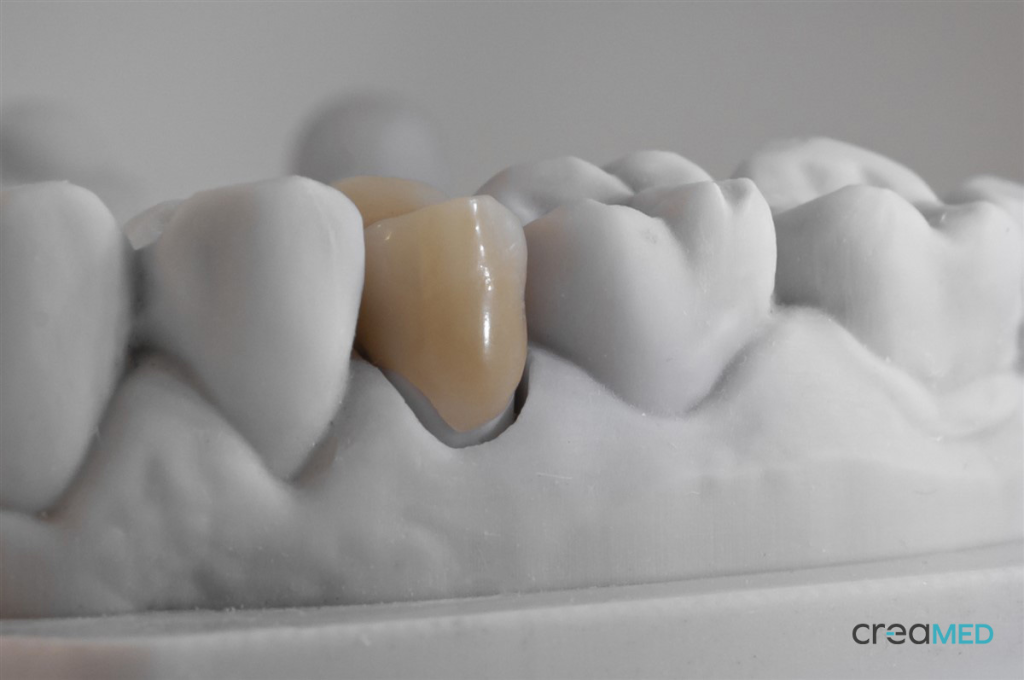
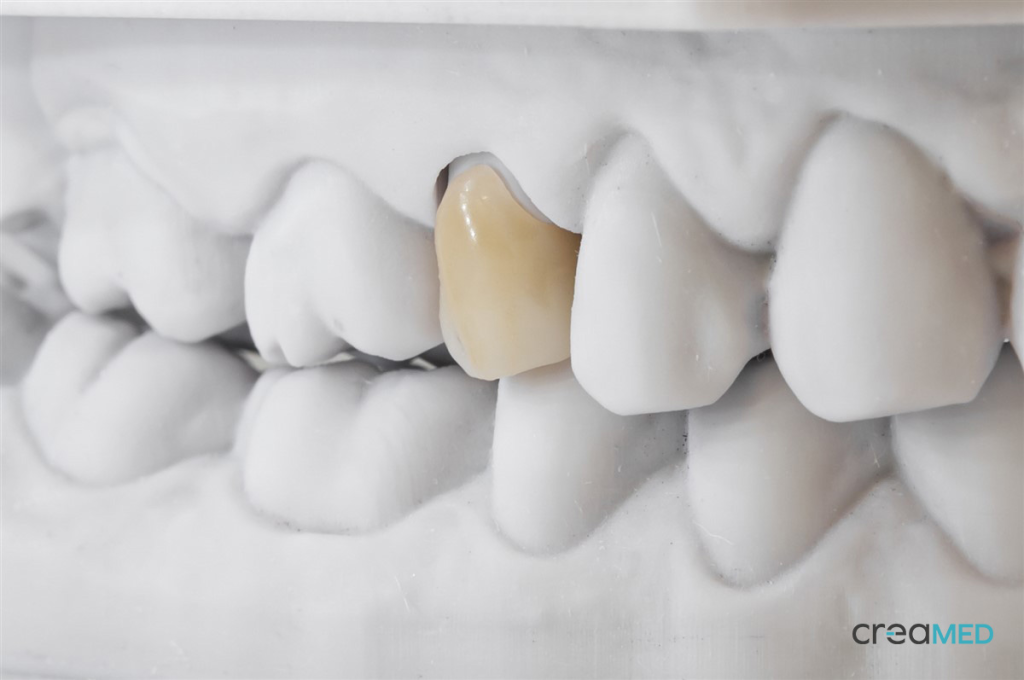
Finally, the team sandblasted the crown internally – to increase the adhesion – and cemented with light-curing dual cure adhesive cement.
We can notice a perfect chromatic integration from the photos showing the crown check two weeks after the cementation.

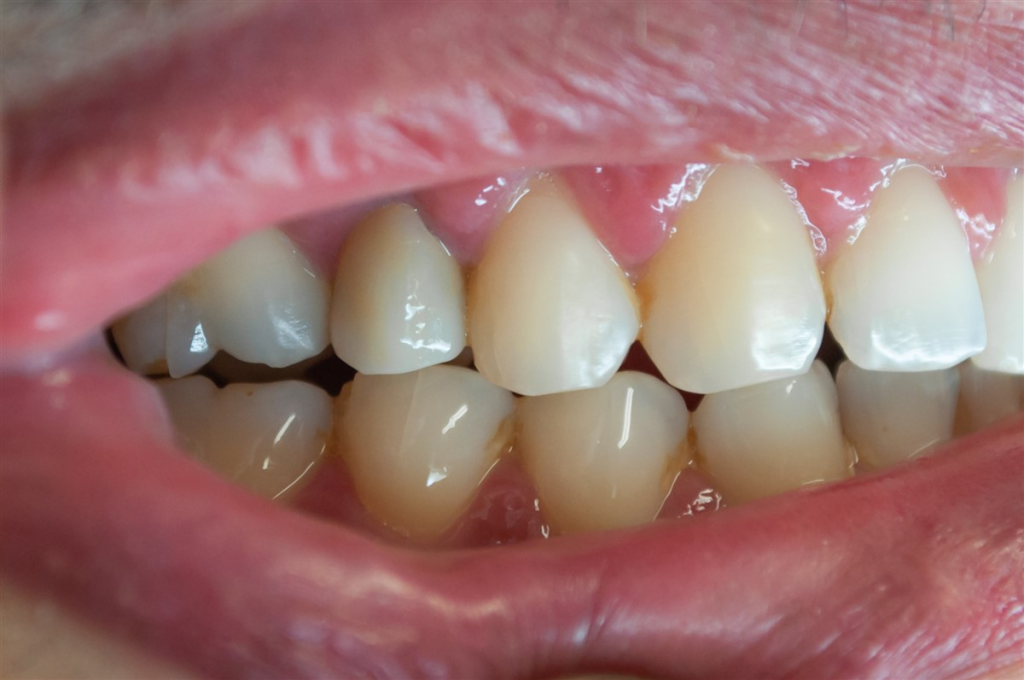
3D scanning and printing for permanent crown on post and core: Conclusion
We can assert that there is an essential synergy between SHINING 3D’s AoralScan and Accufab printing system. It grants highly accurate results, during both data acquisition and the realization of permanent teeth, even in particular cases like this one.
The main challenge in this case was dealing with a metal post and core. It could have caused some acquisition problems during the intraoral scan phase. This would have undermined the reliability of a completely digital protocol concerning the realization of the crown. We were however able to capture it easily with SHINING 3D’s software tools.
The implementation of innovative and highly performant materials, such as the Bego VarseoSmile Crown, let us obtain a sure resistance in the short run (time elapsed between the cementation and the first check) and a good chromatic integration.
Certainly, we can notice a light greyish shade in correspondence of the cervical part. This is due to the presence of the metal post and core. Nevertheless, we wanted to push further specifically to test the limits of this procedure (if there were). Regarding vital stumps, we’re sure that the material features would be highlighted from an aesthetical point of view, by perfectly integrating from the finish line to the incisal edge and getting the colour from the stump for a more natural integration.
We truly thank the Laboratorio Odontotecnico di Michele Di Bisceglie for their cooperation and support to the development of this Permanent crown on post and core study case.
 ENG
ENG









